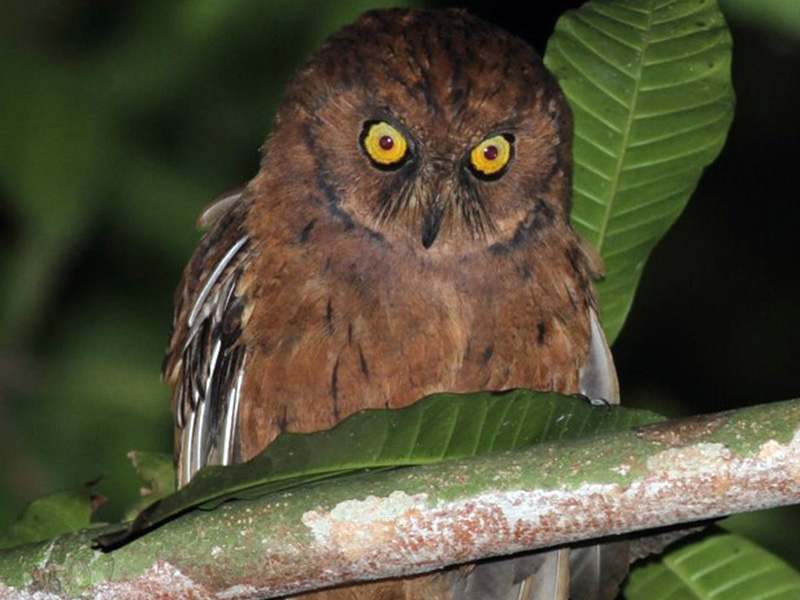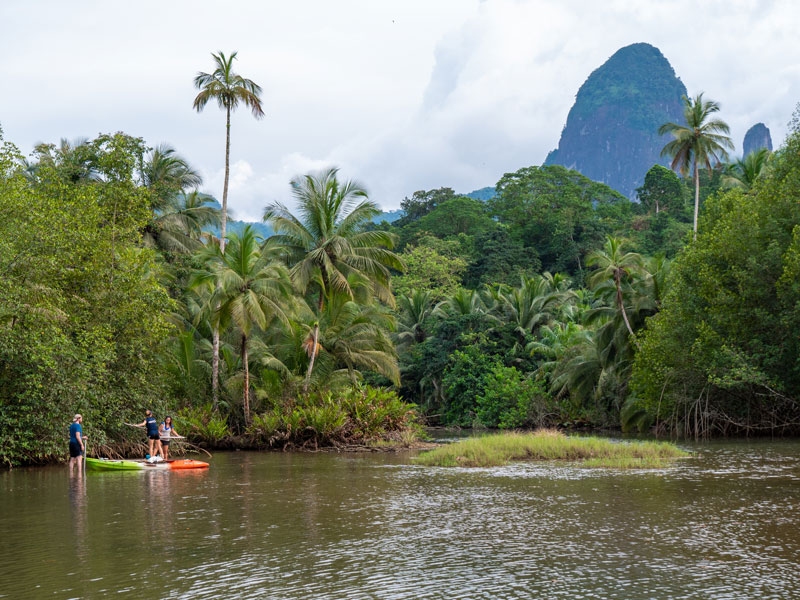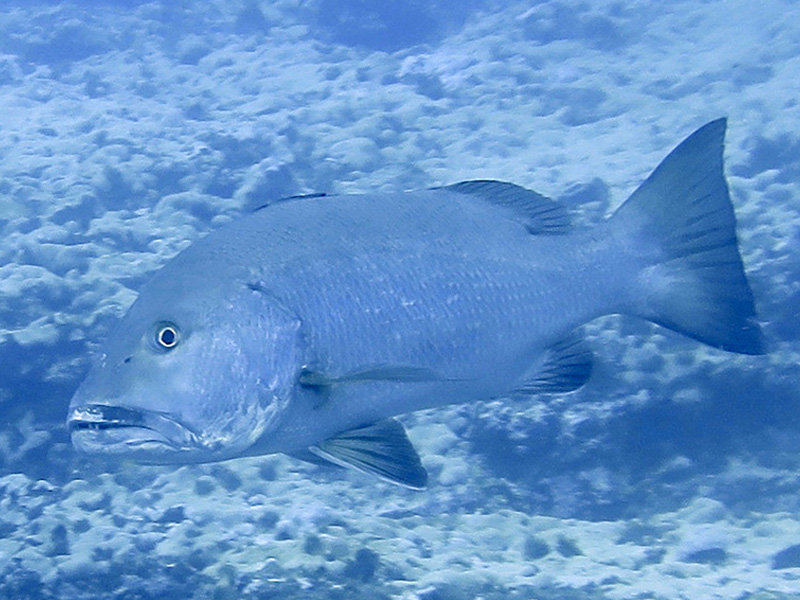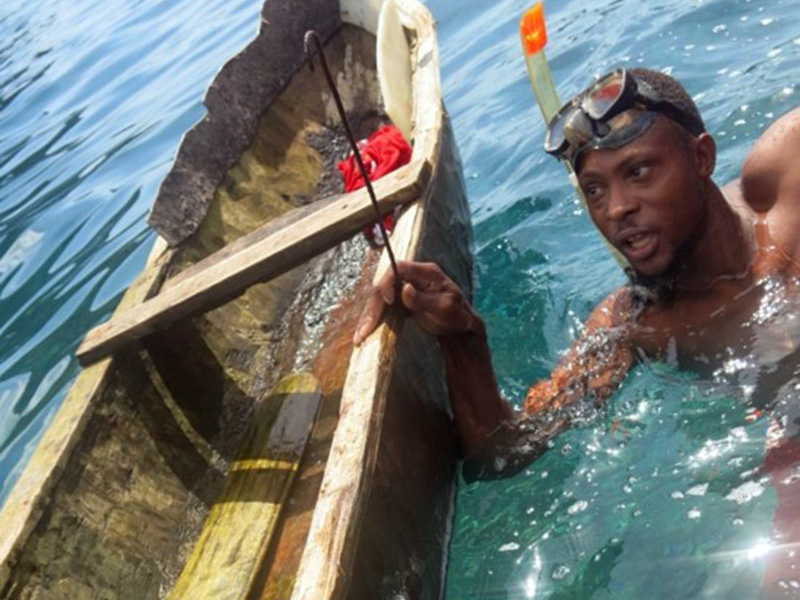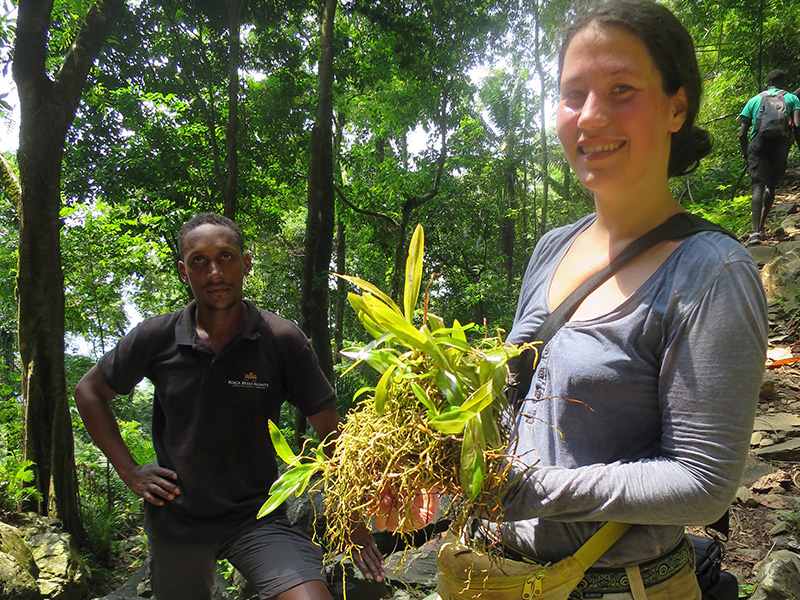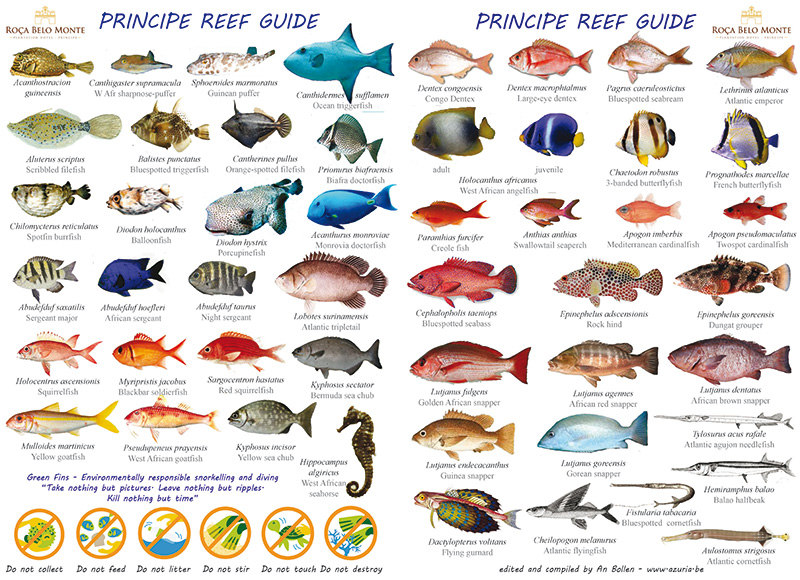Context: In 1928, local islanders reported the presence of a small nocturnal bird, but were not able to confirm its identity. In 2009, Martim Melo and Martin Dallimer, recorded the calls of what they suspected was probably a scops owl on Príncipe. Several attempts to actually find the species were unsuccessful. Early July 2016, Philippe Verbelen, a Belgian ornithologist managed to locate and photograph the scops owl species (Otus sp. nov.) in the forests of Rio Porco where its putative call was previously recorded. Verbelen managed to obtain high quality sound recordings, which he then used to lure the owl into view. Its call is unlike any of the known calls of other scops owl species, a strong indicator that this might represent a species new to science, endemic to the island of Príncipe.
On 29 May 2017, a team lead by Martim Melo in collaboration with the Fundaçao Príncipe Trust was able to legally obtain a specimen and genetic analysis is currently ongoing in order to confirm that the species is indeed distinct from Otus hartlaubi (São Tomé) and Otus feae (Annobon). The species description will be done by Philippe Verbelen, Martim Melo (Univ. Porto) and George Sangster (Univ. Leiden).
So far the call was only heard and recorded in the lowland forests of the Rio Porco and Rio São Tomé area, relatively undisturbed low altitude rainforest located within the National Park of Príncipe at altitudes below 250m. São Tomé & Príncipe are home to 28 recognised endemic birds. These islands exemplify the well-known fact that oceanic islands are often centers of endemism. In order to be able to protect this new endemic species, it is important to understand its ecology, identify potential threats in order to assess its IUCN conservation status and formulate conservation recommendations.
Aim: Understand the ecology of the scops owl on Príncipe in order to protect the species.
Methods: Field work across the forests of the island at all altitudes, ideally during a whole year to include different seasons to conduct population assessment. Surveys mainly at night (6-9.30 pm and 4-7.30 am). Recording and playback equipment. Mapping of its geographic distribution. Threat assessment.
Expected output:
- A distribution map of the species across the island and first population estimate
- Baseline data of its preferred ecological niche (habitat, diet, nesting) and life cycle
- Current threat assessment and conservation recommendations for both species and habitat (cf. Species Conservation Action Plan)
- Species assessment for the IUCN Red List of Threatened Species – http://www.iucnredlist.org/
Collaboration:
- Parque Natural do Príncipe Director Daniel Ramos – for research permit and access to PNP
- Unidade de Cogestao da Biosfera Ana Alice Prazeres
Bárbara Freitas – Martim Melo Univ. Porto – Ricardo Lima São Tomé – BLI/SPEA


